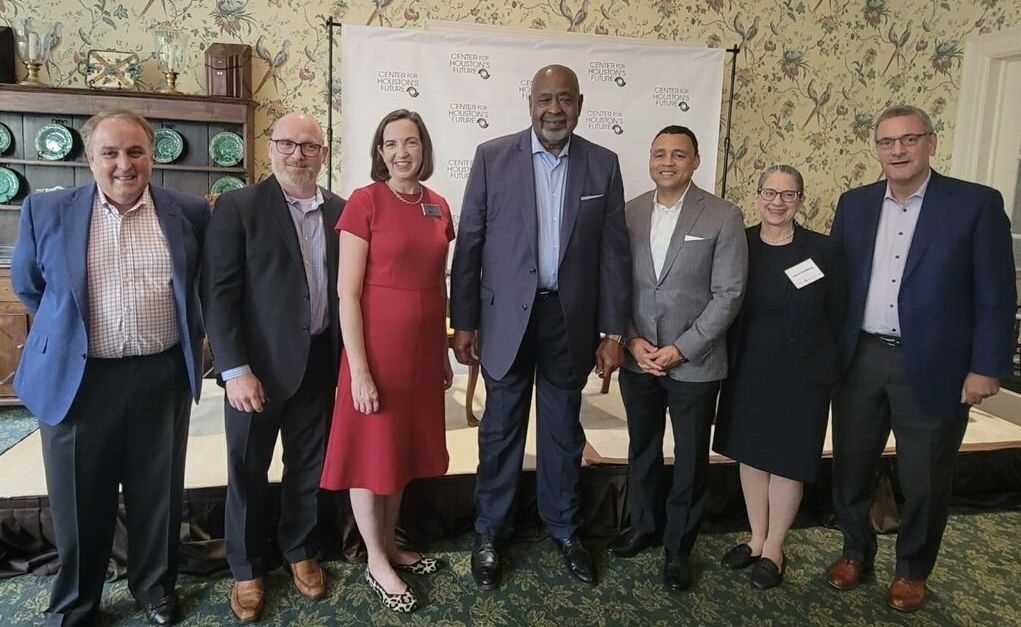The Houston Energy Transition Initiative (HETI) concludes another impactful year by reaffirming our commitment to positioning Houston as the global leader in the energy transition – delivering more energy with fewer emissions. HETI continues to be focused on advancing key regional priorities, driving economic development and talent recruitment.
It was a year of changes across the energy landscape, yet HETI continued to collaborate, convene, and deliver measurable progress. Below are some of the year’s key highlights:
Sharing Members’ Impact on Decarbonization and Emissions Reductions
HETI released a report detailing members’ low-carbon initiatives and commitments, showcasing industry momentum and long-term pathways to achieving the dual challenge of meeting growing global energy demand while reducing emissions. Major findings include more than $95 billion in low-carbon investments and 20% reduction in Scope 1 emissions since 2017 by HETI-affiliated companies. The report also recommends strategic pathways for continued emissions reductions.
Advancing CCUS at Commercial Scale
HETI publicly supported efforts to accelerate carbon capture, utilization, and storage (CCUS) efforts to commercial scale. Early in the year, HETI and the Houston CCS Alliance commissioned Texas A&M University’s Energy Institute and Mary Kay O’Connor Process Safety Center to research the operational history and safety record of CCUS in the United States. In November, the U.S. Environmental Protection Agency granted Texas authority to permit CCUS—a significant win that increases the region’s competitiveness in the global energy ecosystem.
Leadership in Resilient Power for Houston’s Growth
In June, HETI hosted its first Resilient Power: Fueling Houston’s Growing Economy summit, bringing together more than 100 business and civic leaders to discuss the role of resilient, reliable power in Houston’s economic development. Cross-sector leaders explored the impacts of rising power demand driven by industrial decarbonization and digitalization, and discussed the essential collaboration between the energy and tech sectors to strengthen long-term resilience through an “all of the above” approach. HETI also published a fact sheet on Houston’s resilient power access, affordability, and reliability as a resource for partners.
Showcasing Houston’s Leadership at CERAWeek 2025
HETI participated in CERAWeek 2025, elevating Houston’s energy leadership on the world stage. The HETI House activation in the Innovation Agora attracted more than 1,000 visitors and generated over 80 economic development leads. In addition, HETI partnered with Rice Alliance and TEX-E for the fourth annual Energy Ventures Pitch Competition at CERAWeek, bringing together students, startups and energy leaders to advance innovation and investment.
Scaling Houston’s Innovation Ecosystem
As Houston’s energy innovation ecosystem continues to grow, HETI plays an important role in shaping its future. During its second year, Houston Energy and Climate Startup Week attracted more than 3,900 attendees from local and global startups, industry leaders, and investors—further solidifying Houston’s status as the world’s leading energy innovation hub.
Strengthening Regional Competitiveness
To advance technology commercialization and support the Gulf Coast’s continued energy competitiveness, HETI hosted its second annual Gulf Coast National Labs Workshop. This year’s event convened more than 120 leaders representing six national laboratories, industry partners, academia, and government stakeholders to accelerate collaboration around the region’s greatest energy and chemical challenges.
HETI’s progress this year is significant, but the work ahead is even more critical. As we move into the new year, HETI remains steadfast in its commitment to convening industry leaders, informing policy, supporting innovation, and driving economic growth across the region. This work strengthens Houston’s core energy economy and accelerates the emerging sectors that will ensure Houston continues to lead the world in energy.
———
This article originally appeared on the Greater Houston Partnership's Houston Energy Transition Initiative blog. HETI exists to support Houston's future as an energy leader. For more information about the Houston Energy Transition Initiative, EnergyCapitalHTX's presenting sponsor, visit htxenergytransition.org.






 Photo by Laura Goldberg/Center for Houston's Future on
Photo by Laura Goldberg/Center for Houston's Future on